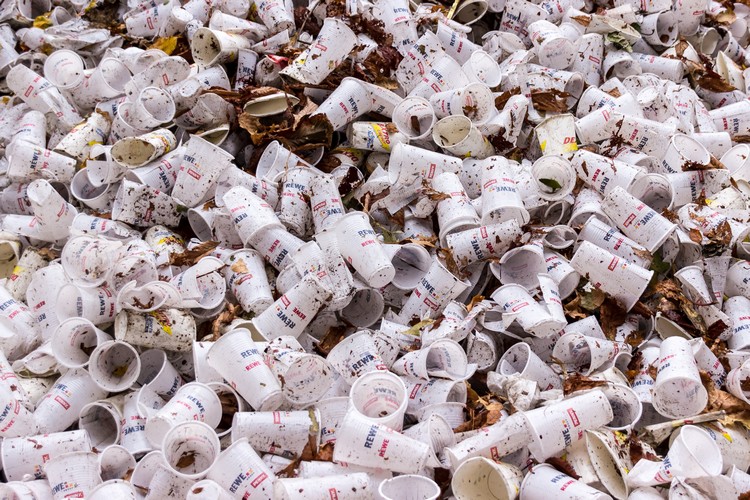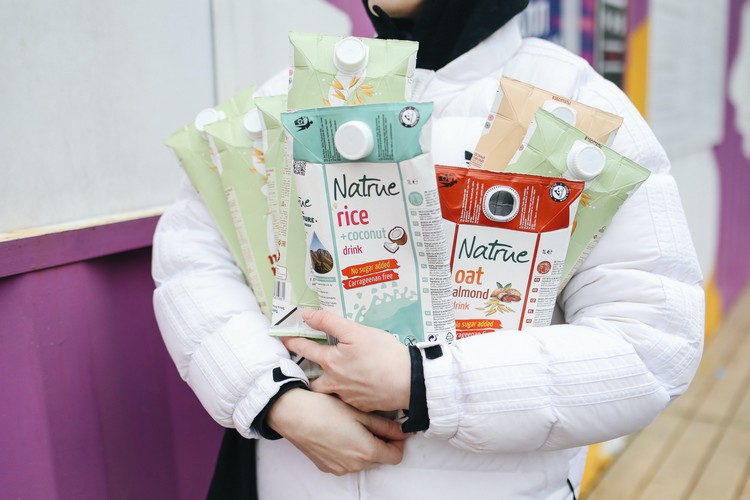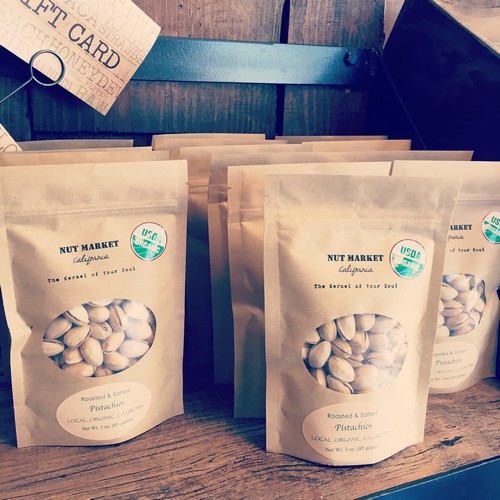Application and production process of film and paper lamination material in daily life
The invention of plastic brings great convenience to our life, especially the beverage bottles, plastic bags, food containers, melamine tableware, etc. in daily contact are all plastic products that we are familiar with. However, because they are largely used, they cause environmental pollution and ecological damage, and even becomes a public enemy of the world. In order to combat the "White Pollution" that has been undefeated for many years, many countries have banned on disposable plastics, and the packaging materials bear the brunt. The supply chain of the packaging industry has to take action to find alternative solutions that do not harm the environment and can be used in mass production. Paper products will replace plastics as the next new trends under this current wave of plastic reduction, and also bring opportunities to packaging materials market.

(Image source: Piqsels)
White pollution has attracted global attention, and green packaging is a major issue. Even as we try to reduce the plastic usage, but the cost of majority of green materials is still high when we consider the technology, process and product design. Will this hinder the progress of green packaging? The research from European environmental group “Two Sides” shows that paper is one of the products with the highest recycling rate in the world. From the perspective of cost advantages and environmental protection in line with the demands of circular economy, high plasticity and incomparable function that other materials don’t have, paper has been widely used in the packaging field and has become the first choice of plastic substitutes.
Plastic is popular for its elasticity, malleable, and thinness; although paper products can replace plastic, there are still many technical problems to be solved, such as the poor water-proof ability which is easy to be damped and the poor barrier which is easily causing food deterioration. In order to solve water and heat resistance of paper, the industry successively invested in "paper-plastic lamination materials" technology to reinforce the function of paper materials, so that it has high stiffness and high strength, as well as aesthetic and different paper texture. And through lamination technology to improve the durability and barrier of paper packaging, paper-plastic lamination packaging can greatly extend the freshness and shelf life of food and medicine. This meets the requirements of various packaging designs and enhances the value of commodities, so it has become an important packaging application for consumer products. In addition to the original fried paper bags and milk/ beverage boxes, the package of disposable lunch boxes and dessert snacks have gradually turned to paper-plastic lamination packaging. Under the mainstream consciousness that the global pursuit of sustainable development, paper packaging will move toward environmentally friendly green direction that mainly focus on high strength, light weight, multi-function and multi-substrate as the features.

(Image source: Piqsels)
With the rapid development of science and technology, packaging lamination technology has become more and more mature. In the past, the lamination technology used in plastic packaging has been applied to the paper substrate and when it comes to the composition of lamination materials that the paper packaging has evolved from single-layer to multi-layer materials. There are a variety of materials that can be used for paper and film lamination, including coated paper, white kraft paper, red kraft paper, double-coated paper, writing paper, light coated paper, pearl paper, soft cotton paper, base paper, etc., and in accordance with the requirements of packaging design, it can be made into different lamination structures, such as OPP//paper, PET//paper, CPP//paper, PE//paper, AL//paper and so on.
When designing the paper-film packaging containers, it is necessary to understand the features of the packaging and select the appropriate materials and structures. In terms of bag structure, it is mostly used for solid commodity packaging and the material is light and thin. When people consider the packaging capacity and product display requirements, the structure can be divided into three types, windowless, strip window and special-shaped windows. The windowless structure bag is the most commonly used in the market, and the main material is usually paper (e.g. kraft paper) protected by PE (polyethylene), PP (polypropylene) and other plastic films with the inner and outer layers, which can effectively block moisture and oxygen to prevent the content from deteriorating. The forming process is basically the same as plastic flexible packaging and the paper is first laminated with plastic film and heat seal the opening. The strip window bag and the special-shaped window bag are both see-through structure for display the content, in addition to having partial transparency to present the content and a variety of styles, also with the paper texture. The window bag forming method is to combine a narrow width plastic film between two paper materials, and the bottom layer is laminated with the full width plastic film. There are two ways to make special-shaped windows, one is to cut out windows of different shapes on all paper materials before they are laminated with the film; the other is to laminating the film immediately after laser cutting the paper on the same production line and this will not harm the material of the lamination layer, and it can make large-scale pattern changes and designs to improve the efficiency of the production process.

(Image source: Piqsels)
Looking at the world, green consumption is not just a slogan. Plastic reduction is no longer an environmental protection proposition that is easier said than done. The sustainable development of the package industry has become a common consensus and will be the goal of the entire industry to work together. The adhesive is one of the important components of lamination packaging materials, not only to meet the needs of different lamination materials, but also has more quality requirements with the development of materials and technology.
Solvent-free adhesive has been paid attention to because it does not contain organic solvent, and have become the main trend of the packaging lamination process. The current adhesives used in paper-film lamination materials are single-component PUR (moisture-reactive polyurethane hot-melt adhesive), which don't need to be dried in the lamination process, and has the characteristics of fast speed, less usage and soft hand feel with end products. Solvent-free adhesives have been able to meet the lamination needs of various paper materials and plastic films, but this process must match with a dedicated machine model, and the cost of raw materials is still high, making it difficult to balance environmental protection and cost considerations, becoming an obstacle bottleneck in the development of paper-film lamination technology. The other adhesive for paper-film lamination is two-component polyurethane adhesive. Although the solvent-free lamination machine can be used for paper-film structural, the glue viscosity is low and the fiber of paper material is easy to absorb glue, resulting in low peel strength and penetration problems. At present, those problems mentioned above still need to be overcome and is a direction needs to be working on.
CPMC breaks through the technical bottleneck of the current paper-film lamination adhesives and launches a special solvent-free series of items. Among them, the two-component polyurethane adhesive not only improves the viscosity of the glue and is not easy to penetrate the glue, but also solves the problem of poor leveling of glue in the process of laminating the paper-film structure, providing a new solution for the solvent-free lamination technology.
Solvent-free Adhesive Series Products for Film and Paper Lamination
|
ITEM |
FA-896A/FA-296B |
PR-6221 |
|
TYPE |
two-component |
single-component |
|
SOLVENT-FREE ADHESIVE |
100% Solid content |
100% Solid content |
|
COMPOSITE STRUCTURE |
Film and Paper Lamination (suitable for all kinds of paper-plastic films) |
Film and Paper Lamination (suitable for all kinds of paper-plastic films) |
|
PRODUCT PROCESSING |
Solvent-free lamination machine (can be used for film and paper structure) |
Solvent-free lamination machine (this process must match with a dedicated machine model) |
|
PRODUCT CHARACTERISTIC |
|
|
|
PRODUCT APPLICATION |
Food packaging, daily necessities, cosmetics, sanitary products, etc. |
Food packaging, daily necessities, cosmetics, sanitary products, etc. |
With 30 years of technical strength, CPMC continues to develop high-performance materials, and actively develops environmentally friendly products, expands the scope of product application, makes market segmentation, takes the dual strategy of customer application demand and environmental protection as the development goal and leading the industry in technology. For more product information, please feel free to 【contact us】 via E-mail or call.

